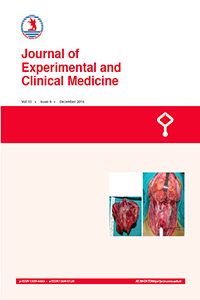Abstract
Due to its unique structure, oesophageal defects are of the hardest to reconstruct. Since local flap options and their success are limited free tissue transfers are considered the treatment of choice for reconstruction of partial or circumferential defects left by cervical oesophagectomy. While free jejunum flaps are regarded as the most appropriate solution, its donor site morbidity and increased risk associated with its harvest tend the surgeons to prefer a skin flap instead. This study presents our experience with the radial forearm free flap for oesophageal reconstruction along with a detailed description of the techniques utilized and an 11 patient case series. This flap technique is a single stage solution for reconstruction of oesophageal defects yielded by malignant tumour ablation, and it has distinct advantages such as consistent flap anatomy, straightforward dissection technique, long and wide vascular pedicle, and thin and pliable skin paddle. We believe that with good knowledge of flap anatomy and pertinent execution of microsurgical techniques, free radial forearm flap is an effective and reliable option for post-ablative oesophageal reconstruction in the elderly patients. Also, thanks to the pliable skin paddle and long vascular pedicle, radial forearm flap is one of the most frequently preferred skin flaps for oesophageal reconstruction.
Details
| Journal Section | Surgery Medical Sciences |
|---|---|
| Authors | |
| Publication Date | July 3, 2017 |
| Submission Date | June 19, 2016 |
| Published in Issue | Year 2016 Volume: 33 Issue: 4 |
Cite

This work is licensed under a Creative Commons Attribution-NonCommercial 4.0 International License.


